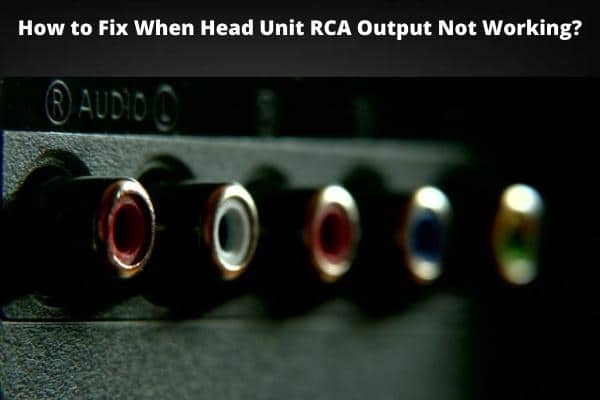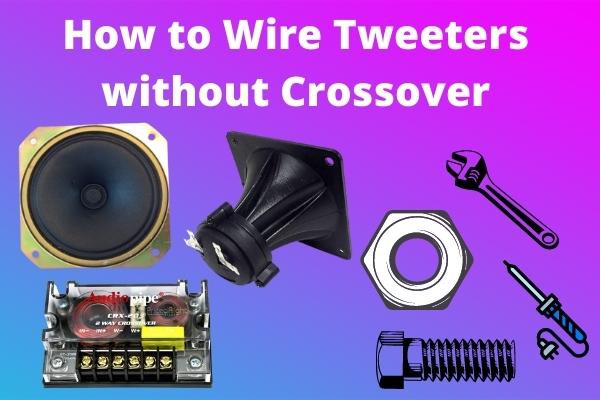
Many people love listening to music during driving. It is essential to have good-quality subwoofers in a car for better sound. Some people focus more on the car’s speakers than on other parts of the vehicle.
Some essential terms play a significant role in getting the best sound out of your subwoofers, such as impedance, frequency, and amp. If you are an obsessive car driver, you need complete information on these terms like What Hits Harder 1 Ohm or 4 Ohm.
The combination of impedance and amplifier must be correct for the perfect working speakers. The subwoofer’s amplifier can be damaged if you cannot arrange the ideal combination.
The combination of impedance and amplifier results in producing excellent quality sound. So, if you don’t have any information regarding these terms, don’t worry. This article will provide a complete overview of the car impedances and which impedance hits harder.
What is Impedance?
Impedance is the amount of resistance offered in the path of an electrical current by the electrical circuit. In short, it opposes the current traveling in the electrical circuit. A low impedance means that the current will get less opposition and high output.
Similarly, a high impedance means that the current will get more opposition, and as a result, you will get low output. These impedances are available in sizes like 1 ohm, 2 ohms, 4 ohms, etc. It can go to 1 lac ohm or more. But such high impedances are not very commonly used.
The impedance unit is similar to ohm resistance and denoted by a symbol omega Ω. The value of an impedance can be checked on the magnet. It is mainly written on it otherwise you can ask the shopkeeper about it.
What is the Impedance of Subwoofers or Speakers?
A subwoofer or speaker impedance is the amount of resistance offered by a subwoofer or speaker against the amplifier output. The impedance of these subwoofers is around 1 ohm to 8 ohms. But generally, the low impedance is preferred more than the high impedance.
A subwoofer should be suitable for the amplifier so that the amplifier doesn’t get overheated. If the impedance is not ideal with the subwoofer’s amplifier, then there is a high risk of burning the amplifier. That’s why the whole study of impedance and amplifiers is critical.
Importance of Knowing Speaker Impedance:
Speaker impedance has a significant role in the function of an amplifier. Usually, the impedance can be affected by the frequency. Therefore, whatever is written on the impedance can be different for different frequencies.
For example, an 8-ohm impedance for a 45 Hertz frequency can fluctuate to 2000 Hertz frequency at 3 ohms. This fluctuation in the frequency and impedance can affect the functioning of the amplifier.
That’s why instead of purchasing different impedances, it is better to know which impedance is suitable for your amplifier. For example, most speaker manufacturers have stated 4-ohm impedance as appropriate for car speakers or subwoofers.
There are two critical reasons for this fluctuation. These are as follows:
- Resonance Frequency: Resonance frequency is a point of frequency below which a speaker doesn’t generate output. At that point, the speaker’s impedance is maximum, and no sound is delivered by it.
- Voice Coil Inductance: The other reason for fluctuation is the voice coil inductance. It increases the impedance with the increase in the frequency and vice versa.
When the impedance is decreased, more current will flow, and more load will be on the amplifier. As a result, the amplifier will stop working correctly.
Impedance decides how much load will be on the amplifier. If the impedance is low, a high current will flow through the circuit. It means that there will be more load on the amplifier.
If the impedance is high, then a low current will flow through the circuit, which means less load on the amplifier. Therefore, the amplifier of a speaker must be capable of bearing the current passing through it. Some amplifiers are stable at an impedance of 1 ohm.
Impact of Wiring Arrangements:
The arrangement of wires also impacts the impedance of a subwoofer. It is imperative to note that the impedances and voice coil inductances are arranged in what format. You can also place them to achieve the required impedance in a system.
There are two primary wiring arrangements in a system that are as follows:
Series Combination:

Two and more impedances are wired side by side with opposite terminals in a series combination. It means a positive terminal is connected to a negative, and so on. The total impedance is calculated by the sum of each impedance wired in the combination.
Parallel Combination:

Two or more impedances are wired parallel with the same terminals in parallel combinations. It means a positive terminal of one impedance is connected to the positive terminal of each impedance and the other side with the negative terminal of each impedance.
The total impedance of a parallel combination is calculated by adding the values of each impedance and dividing it by the whole number of impedances. For example, if four impedances of 4 ohms are installed in a parallel combination, the total impedance will be 1 ohm.
Difference between 1 Ohm and 4 Ohms:
We have discussed that the voice coil inductance plays a significant role in impedance fluctuation. Every car’s speakers have a voice coil inductor that manages the resistance of the electrical signal applied to the amplifier. This resistance is known as impedance.
These impedances are available in different values. As a result, these impedances oppose the current flow, increasing power or load on the amplifier.
It is evident that if a system has a high impedance, there will be less load on the amplifier. But in that case, there will be a low amount of sound generation. On the other hand, if the impedance value is low, there will be more load on the amplifier.
But here, one more question arises why do we require high and low impedances? It is because different systems have different bearing capacities. A high impedance can’t be installed in a low power amplifier, and similarly, a low impedance will not be enough for the high power amplifier.
It is vital to notice that low impedance will have a high load on the amplifier and if the amplifier is unable to bear it can get burned. That’s why knowing the value of impedance and amplifier is very important.
You can’t install a 4-ohm impedance in a 4-ohm amplifier. However, a 4-ohm impedance will suit a 1-ohm amplifier to bear the current load. Also, a 1-ohm impedance will be insufficient for a 4-ohm amplifier.
What Hits Harder 1 ohm or 4 ohm?
The main question arises which impedance hits harder; 4 ohms or 1 ohm? Hitting harder means having a more powerful impact on the amplifier, and you get more output than others.
From the above discussion now, we can quickly answer this question. A 1-ohm impedance will hit harder than a 4 ohms impedance. So due to low impedance, the amplifier will generate a louder sound. But it has a drawback: if the amplifier is low quality, it can get burnt.
On the other hand, a 4 ohms impedance cannot hit harder than 1 ohm, but the sound quality is way better than the 1-ohm impedance. Also, the chances of burning the amplifier of a subwoofer will be meager in this case.
Conclusion:
A car’s subwoofer can’t produce sound without an impedance and amplifier. The combination of these two devices makes a louder and good-quality sound. So while installing a speaker or subwoofer in a car, it is essential to know this combination.
Impedances are available in different values. So whether you want a 1-ohm impedance or 4 ohms impedance, the amplifier must also be according to it. Although 1-ohm impedance hits harder, a 4 ohms impedance produces more quality sound.
We hope that we have replied to all of your queries and now you have complete information about different impedances.






